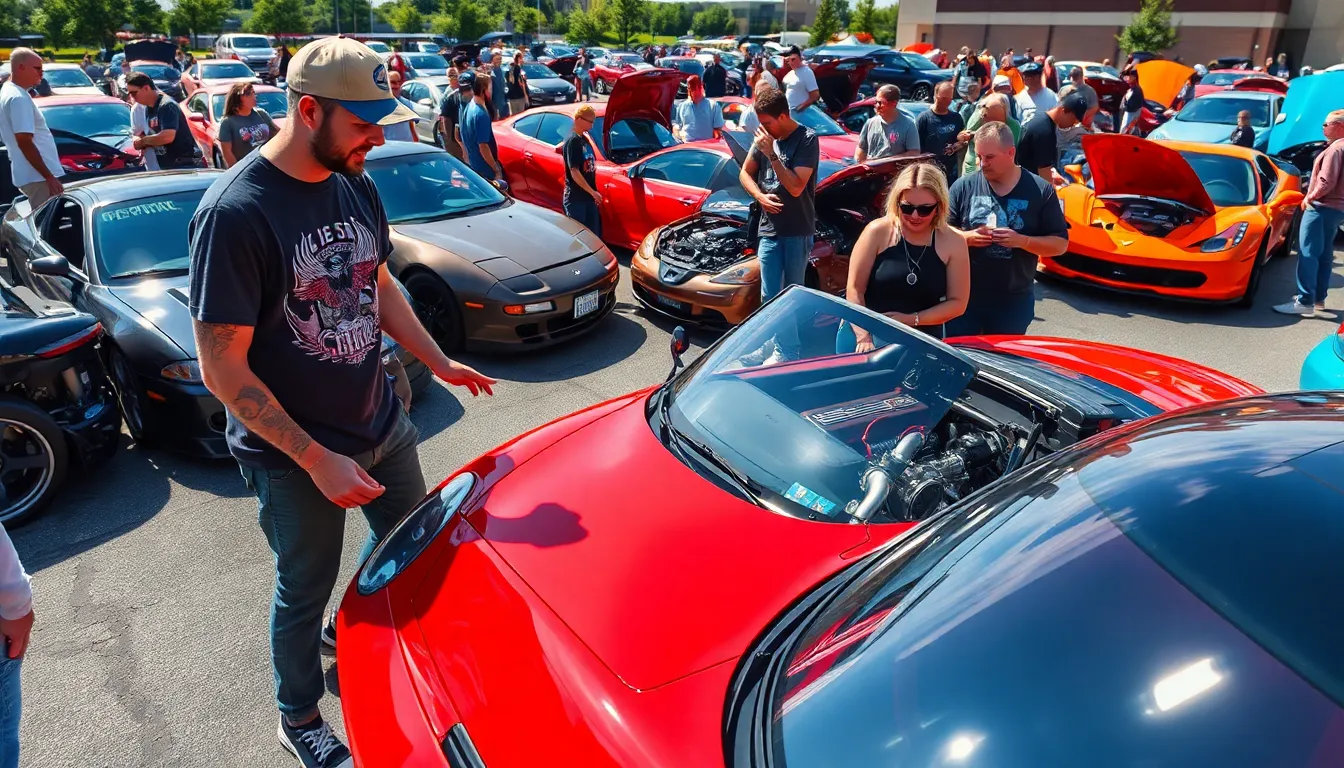We’ve all seen them cruising down the highway – those jaw-dropping vehicles that make us do a double-take and wonder “how did they make it look that incredible?” Modded cars represent the ultimate expression of automotive creativity, where passion meets performance in ways that’d make even the most seasoned car enthusiast’s heart race.
The industry of modified vehicles isn’t just about flashy paint jobs or booming sound systems anymore. Today’s modding community pushes boundaries with everything from engine swaps and turbo upgrades to custom body kits and cutting-edge suspension systems. We’re talking about transforming ordinary vehicles into extraordinary machines that reflect their owners’ personalities and driving ambitions.
Whether you’re dreaming of your first modification or you’re already deep into the modding scene, understanding the ins and outs of this vibrant culture can save you thousands while helping you build the ride of your dreams. Let’s jump into what makes the modded car industry so addictive and rewarding.
What Are Modded Cars and Why They’re Taking Over the Streets
Modified vehicles represent the ultimate expression of automotive personalization. We see these customized machines as more than transportation tools—they’re rolling canvases that showcase individual creativity and engineering prowess. Car enthusiasts transform stock vehicles into unique masterpieces through carefully planned modifications that enhance both appearance and performance.
Performance modifications deliver measurable improvements to vehicle capabilities. Engine tuning increases horsepower by 15-30% in most cases, while suspension upgrades reduce lap times by several seconds on track days. Cold air intakes, exhaust systems, and turbocharger installations boost power output significantly. Advanced modifications like engine swaps can double or triple original horsepower figures.
Aesthetic customization creates visually striking vehicles that command attention. Custom paint jobs, vinyl wraps, and body kits transform ordinary cars into head-turning spectacles. LED lighting systems, custom wheels, and lowered suspensions give vehicles aggressive stances that photograph beautifully. Interior modifications including racing seats, custom upholstery, and digital displays complete the transformation.
Technology integration brings modern features to older platforms. Aftermarket infotainment systems add smartphone connectivity, navigation, and streaming capabilities to vintage cars. Digital gauge clusters replace analog instruments with customizable displays. Backup cameras, parking sensors, and advanced safety systems modernize classic vehicles without compromising their original character.
Community culture drives the modding movement’s explosive growth. Car meets, social media sharing, and online forums create supportive networks where builders exchange ideas and showcase projects. YouTube channels featuring build series attract millions of subscribers who follow every modification step. Instagram accounts dedicated to modified cars generate substantial followings and influence purchasing decisions.
Economic factors make modding more accessible than ever before. Aftermarket parts availability has increased dramatically while prices have decreased due to competition. Online retailers offer financing options for expensive modifications, spreading costs over manageable monthly payments. Used performance parts markets allow budget-conscious builders to achieve impressive results without breaking their wallets.
Popular Engine Modifications That Transform Your Ride’s Performance
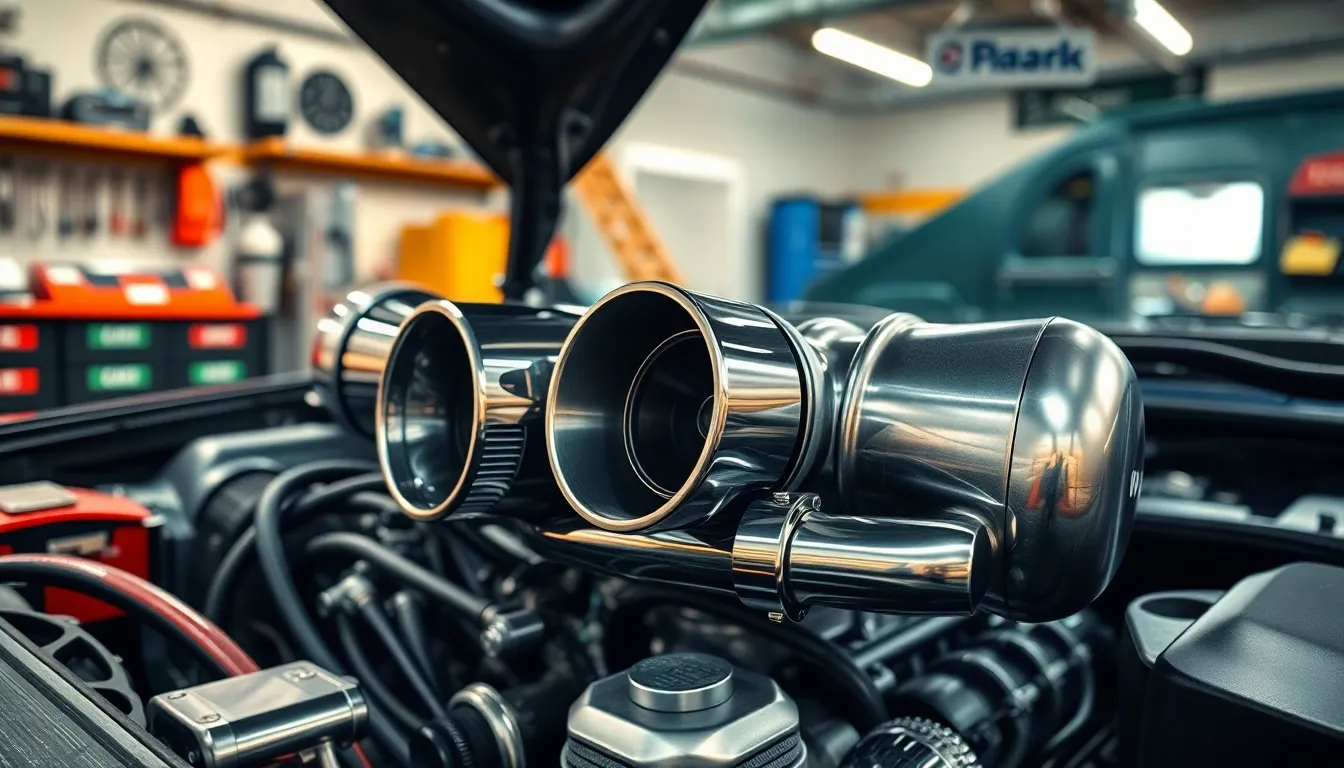
Engine modifications deliver the most dramatic performance gains in any modded car project. We’ll explore three fundamental upgrades that significantly boost horsepower and transform your driving experience.
Turbocharger and Supercharger Installations
Turbocharger installations create massive power increases by forcing compressed air into your engine. These exhaust-driven compressors typically add 30% to 50% more horsepower to naturally aspirated engines while maintaining decent fuel economy during normal driving. Popular turbo kits like Garrett Motion GT series or BorgWarner EFR models bolt onto engines ranging from Honda Civics to Ford Mustangs.
Supercharger systems provide instant throttle response since they’re mechanically driven by your engine’s crankshaft. Roots-type superchargers from Eaton or centrifugal units from ProCharger deliver linear power curves that make daily driving more enjoyable. Installation costs range from $4,000 to $12,000 depending on your vehicle platform and desired power output.
Power gains vary significantly based on your engine’s internals and supporting modifications. Stock engines typically handle 6-8 PSI of boost safely while built motors accept 15-20 PSI or more. Supporting modifications like upgraded fuel injectors, engine management systems, and strengthened internals become essential as boost levels increase.
Cold Air Intake Systems
Cold air intakes replace restrictive factory airboxes with high-flow filters and smoother intake tubes. These systems draw cooler air from outside the engine bay, increasing oxygen density and combustion efficiency. Popular brands like K&N, AEM, and Injen offer vehicle-exact kits that typically add 5-15 horsepower while improving throttle response.
Installation requires minimal mechanical experience and basic hand tools in most applications. Most cold air intake systems feature reusable cotton or synthetic filters that last 50,000 miles between cleanings. Price points range from $150 to $400 for quality systems that include heat shields and proper mounting hardware.
Performance benefits extend beyond horsepower gains to include improved engine sound and visual appeal. Many systems relocate the filter to areas with better airflow like wheel wells or front bumper areas. Short ram intakes cost less but may actually reduce performance by drawing hot engine bay air instead of cooler outside air.
Exhaust System Upgrades
Cat-back exhaust systems replace everything from the catalytic converter to the rear bumper with larger diameter pipes and performance mufflers. These systems reduce backpressure and typically add 10-25 horsepower while creating deeper exhaust notes. Brands like Borla, MagnaFlow, and Corsa engineer systems that balance performance with acceptable noise levels for daily driving.
Header installations provide the biggest exhaust-related power gains by replacing restrictive factory manifolds. Long tube headers on V8 engines or equal-length headers on turbocharged cars improve exhaust scavenging and can add 15-30 horsepower. Professional installation often becomes necessary since header swaps require important disassembly work.
Material choices affect both performance and longevity of exhaust components. Stainless steel systems cost more initially but resist corrosion better than aluminized steel alternatives. Titanium exhausts offer weight savings and unique coloring properties but carry premium price tags starting around $2,500 for complete systems.
Exterior Modifications That Make Modded Cars Stand Out
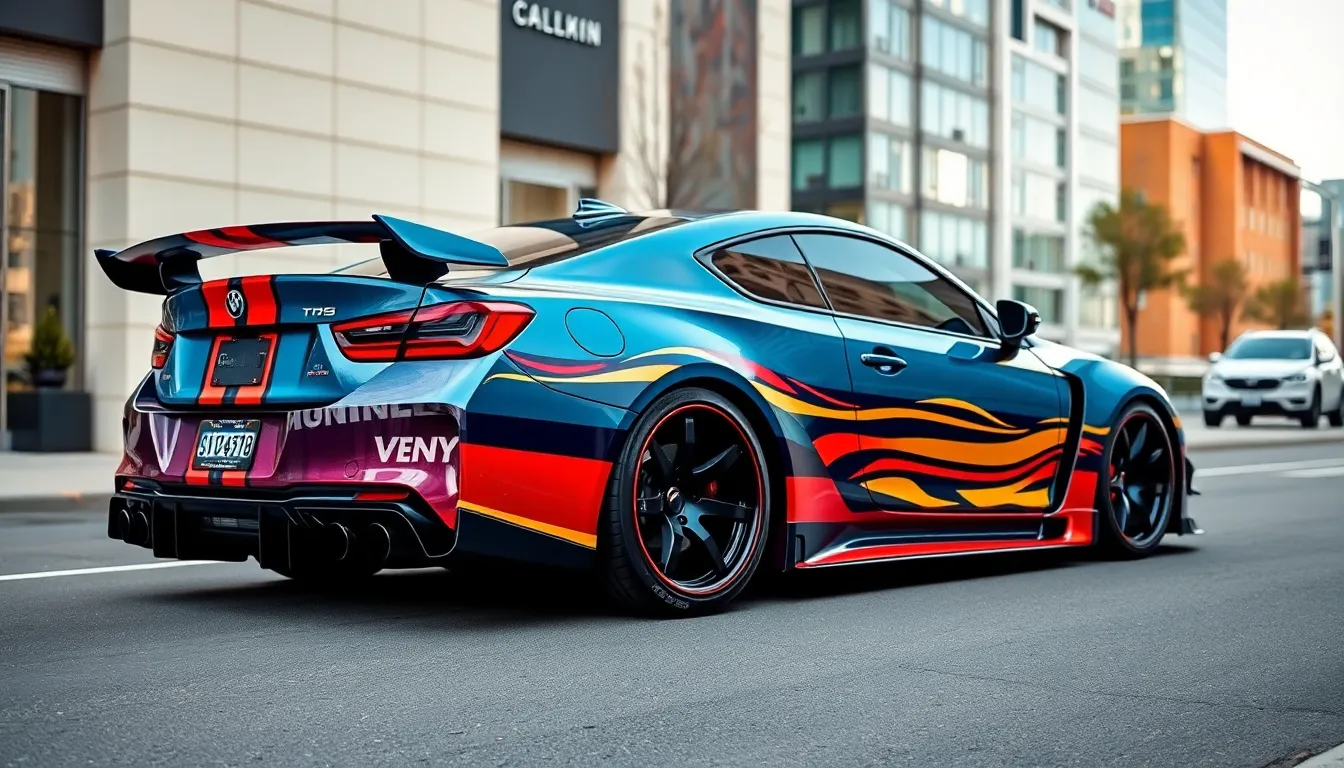
Exterior modifications transform ordinary vehicles into head-turning masterpieces that command attention on any street. These visual upgrades work hand in hand with performance enhancements to create the complete modded car experience.
Body Kits and Aerodynamic Enhancements
Body kits deliver dramatic visual transformation while improving aerodynamic performance. Wide body kits like Rocket Bunny or Liberty Walk designs create aggressive stances that completely change a car’s appearance. Front splitters reduce lift at highway speeds and direct airflow more efficiently around the vehicle. Side skirts smooth airflow along the car’s sides while adding visual weight to the lower profile.
Rear spoilers and wings provide both form and function for modded cars. Fixed spoilers improve high speed stability and reduce drag by 3% to 8% depending on design. Adjustable wings allow fine tuning of downforce for track applications. Duck tail spoilers offer subtle styling upgrades while maintaining clean aerodynamic profiles.
Fender flares accommodate wider wheels while creating muscular visual presence. Bolt-on flares provide cost effective width increases of 2 to 4 inches per side. Seamless molded flares require professional installation but offer factory-like integration. Carbon fiber options reduce weight by 40% compared to fiberglass alternatives.
Custom Paint Jobs and Vinyl Wraps
Custom paint transforms modded cars into unique artistic expressions. Pearl and metallic finishes create depth and shimmer that changes appearance in different lighting conditions. Matte black wraps cost $2,000 to $3,500 for full vehicle coverage while custom paint jobs range from $5,000 to $15,000. Color changing paints like ChromaFlair shift hues based on viewing angle.
Vinyl wraps offer reversible customization with endless design possibilities. Chrome wraps create mirror-like finishes that grab attention from blocks away. Carbon fiber patterns add texture without the weight or cost of real carbon components. Racing stripes and graphics packages let owners showcase personal style or team affiliations.
Professional installation ensures wraps last 5 to 7 years with proper care. Quality 3M or Avery Dennison materials resist fading and maintain adhesion through temperature changes. Ceramic coating over wraps extends lifespan and simplifies maintenance. DIY wrap kits save money but require patience and skill for professional results.
Wheel and Tire Upgrades
Aftermarket wheels instantly upgrade any modded car’s appearance and performance. Forged wheels reduce unsprung weight by 15 to 25 pounds per corner compared to factory cast options. Popular brands like BBS, Enkei, and Work offer designs ranging from $300 to $2,000 per wheel. Proper sizing maintains speedometer accuracy while achieving desired stance.
Performance tires maximize grip and handling capabilities. Summer performance compounds like Michelin Pilot Sport 4S provide superior dry traction for spirited driving. All season options balance year round usability with enhanced performance over stock tires. Track focused tires deliver maximum grip but wear quickly on street surfaces.
Staggered setups create aggressive appearance while optimizing weight distribution. Wider rear wheels accommodate larger tires for improved acceleration traction. Square setups use identical front and rear sizes for balanced handling characteristics. Proper offset selection ensures clearance for suspension components and brake upgrades.
Interior Customizations That Enhance the Driving Experience
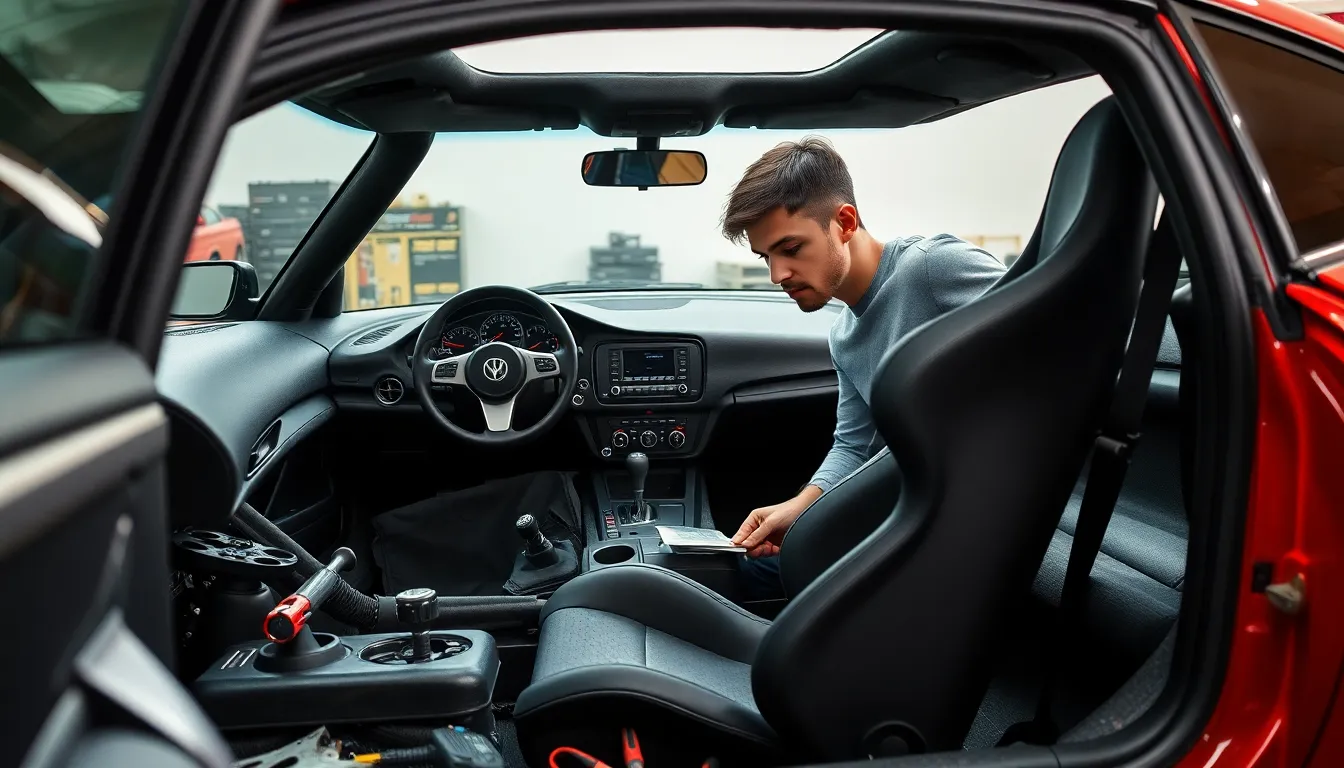
Moving beyond external modifications, interior upgrades create the ultimate connection between driver and machine. These cabin enhancements transform daily drives into immersive experiences while improving comfort and functionality.
Racing Seats and Harness Systems
Racing seats provide superior support and comfort during spirited driving sessions compared to factory seating. We see dramatic improvements in lateral support when installing bucket seats with bolstered side panels that keep drivers positioned correctly during cornering. Popular brands like Recaro and Sparco offer seats with weight reductions of 15-20 pounds per seat while maintaining crash safety standards.
Four point and five point harness systems distribute crash forces across the chest and shoulders more effectively than standard three point belts. Professional racing harnesses from manufacturers like Sabelt and Schroth feature quick release mechanisms that allow rapid exit during emergencies. Installing proper harness bars ensures mounting points can withstand forces exceeding 3,000 pounds during impact scenarios.
Seat positioning becomes critical when combining racing seats with roll cages or harness bars. We recommend maintaining at least two inches of clearance between the driver’s helmet and any structural components to prevent injury during collisions. Custom seat rails often require fabrication to achieve optimal driving positions while preserving adequate legroom and visibility.
Custom Dashboard and Gauge Clusters
Custom gauge clusters provide real time engine data that factory instruments simply cannot match. Digital displays from companies like AEM and Haltech monitor parameters including exhaust gas temperatures, boost pressure, and air fuel ratios with precision readings updated multiple times per second. These systems help prevent engine damage by alerting drivers to dangerous operating conditions before catastrophic failures occur.
Carbon fiber dashboard overlays reduce interior weight while creating a motorsport aesthetic that complements performance modifications. We’ve observed weight savings of 5-10 pounds when replacing heavy factory dashboard components with lightweight alternatives. Custom switch panels organize additional controls for nitrous systems, electronic boost controllers, and auxiliary lighting in easily accessible locations.
Triple gauge pods and pillar mounted displays maximize dashboard real estate without obstructing visibility. Popular mounting locations include A pillars and dashboard tops where gauges remain within the driver’s peripheral vision during normal operation. Proper gauge placement allows monitoring critical engine parameters without taking eyes off the road for extended periods.
Sound System Installations
High performance audio systems require careful planning to avoid interfering with vehicle weight distribution and structural integrity. Component speakers deliver superior sound quality compared to coaxial designs by separating tweeters and woofers into dedicated enclosures optimized for exact frequency ranges. Premium brands like Focal and Morel produce speakers capable of handling 100+ watts while maintaining clarity at high volumes.
Amplifier mounting locations must balance accessibility with heat dissipation requirements since Class A/B amplifiers generate important thermal energy during operation. We prefer trunk mounted installations that provide adequate ventilation while keeping sensitive electronics away from engine bay temperatures. Proper power distribution requires upgraded alternators and deep cycle batteries to handle increased electrical demands without dimming headlights during bass hits.
Subwoofer enclosures demand precise calculations to achieve optimal bass response without consuming excessive cargo space. Ported boxes typically produce louder output but require larger volumes compared to sealed designs that offer tighter bass control in smaller packages. Custom fiberglass enclosures conform to available space while maintaining acoustic properties necessary for quality sound reproduction.
Suspension and Handling Modifications for Better Performance
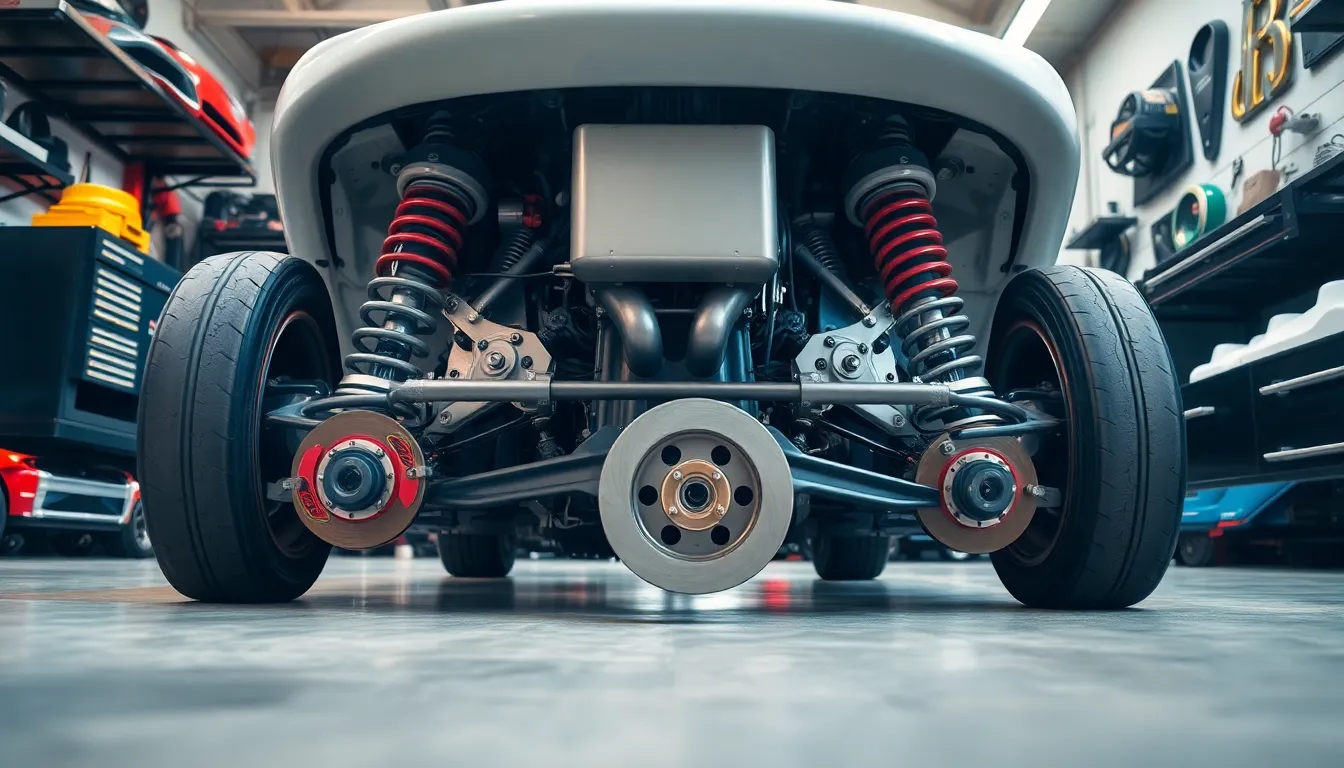
Suspension modifications represent the foundation of enhanced vehicle dynamics, transforming how your modded car responds to driver inputs and road conditions. These upgrades directly impact cornering ability, braking performance, and overall driving confidence.
Lowering Springs and Coilover Systems
Lowering springs reduce vehicle ride height by 1 to 3 inches while improving cornering performance through reduced body roll. Progressive rate springs offer comfortable daily driving with firm performance characteristics during aggressive maneuvers. Linear rate springs provide consistent handling but sacrifice some ride comfort for track-focused applications.
Coilover systems deliver adjustable height settings and damping control, allowing precise tuning for different driving conditions. Height adjustability ranges typically span 2 to 4 inches, enabling optimal suspension geometry for both street and track use. Damping adjustments include rebound and compression settings, with 16 to 32 click ranges providing fine-tuning capabilities.
Quality coilovers feature monotube or twin-tube construction, with monotube designs offering superior heat dissipation during extended track sessions. Twin-tube systems provide better ride quality for daily driving while maintaining performance benefits. Premium systems include features like remote reservoirs and external adjustment knobs for convenient tuning.
Sway Bars and Strut Braces
Sway bars increase roll stiffness by connecting left and right suspension components, reducing body lean during cornering by 20% to 40%. Larger diameter bars provide greater stiffness, with sizes ranging from 24mm to 32mm depending on vehicle weight and intended use. Hollow bars maintain strength while reducing unsprung weight by 2 to 5 pounds per bar.
Adjustable sway bars offer multiple mounting positions to fine-tune handling balance between understeer and oversteer characteristics. End links with spherical bearings eliminate binding and provide precise force transmission compared to stock rubber bushings. Polyurethane bushings reduce sway bar deflection while maintaining acceptable noise levels for street driving.
Strut tower braces connect suspension mounting points to increase chassis rigidity and improve steering response. Upper strut braces tie together the front suspension towers, reducing flex during hard cornering and emergency maneuvers. Lower braces connect subframe mounting points, creating a more rigid foundation for suspension components to operate effectively.
Performance Brake Upgrades
Performance brake systems handle increased heat generation from aggressive driving while providing shorter stopping distances and improved pedal feel. Larger diameter rotors ranging from 11 to 15 inches increase thermal mass and cooling surface area. Vented rotors feature internal cooling vanes that reduce operating temperatures by 50 to 100 degrees Fahrenheit.
High-performance brake pads use compounds designed for elevated temperatures, maintaining consistent friction coefficients above 800 degrees Fahrenheit. Street pads balance performance with minimal noise and dust production. Track pads prioritize maximum stopping power and fade resistance but require warm-up periods for optimal performance.
Stainless steel brake lines replace rubber hoses to eliminate expansion under pressure, delivering firmer pedal feel and more precise brake modulation. Brake fluid upgrades to DOT 4 or DOT 5.1 specifications raise boiling points from 401 degrees to 518 degrees Fahrenheit. Big brake kits combine larger rotors with multi-piston calipers, reducing stopping distances by 10% to 15% while improving heat management.
Legal Considerations When Building Modded Cars
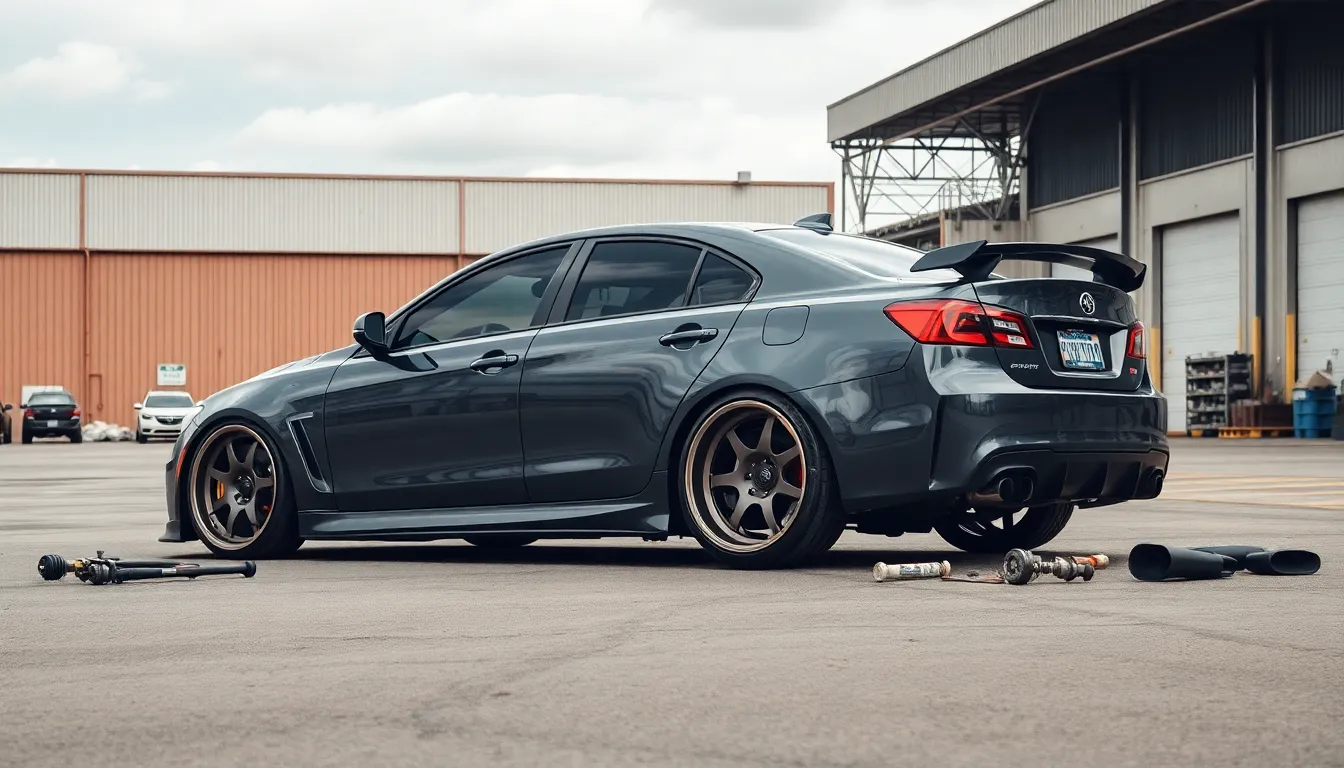
Building your dream modded car requires careful attention to legal requirements that vary significantly across different states and jurisdictions. We’ll explore the most critical legal aspects every modifier must understand before making changes to their vehicle.
Emissions and Safety Regulations
Emissions standards represent the most restrictive aspect of vehicle modification laws across the United States. The Environmental Protection Agency (EPA) requires all modified vehicles to maintain their original emissions certification, making many popular performance modifications illegal for street use.
Federal emissions laws prohibit tampering with catalytic converters, removing emissions control devices, or installing aftermarket parts that haven’t received an EPA exemption number. California’s Air Resources Board (CARB) maintains the strictest standards, requiring all aftermarket parts to display valid CARB Executive Orders for legal installation.
State safety inspections create additional compliance requirements that vary dramatically by location. States like Texas and New York mandate annual safety inspections that examine modified suspension components, lighting systems, and exhaust noise levels. Modified vehicles must maintain proper ground clearance, typically 4 to 6 inches depending on state regulations.
Vehicle height modifications face exact restrictions in most jurisdictions. Lifted trucks cannot exceed maximum height limits that range from 13 feet in some states to 14 feet 6 inches in others. Lowered vehicles must maintain minimum ground clearance requirements and cannot interfere with headlight beam patterns.
Window tint modifications must comply with visibility percentage laws that differ across state lines. Front side windows typically require 70% to 88% visible light transmission, while rear windows may allow darker tints. Law enforcement officers can issue citations for non-compliant window modifications during routine traffic stops.
| State | Front Window Tint Limit | Rear Window Tint Limit | Annual Safety Inspection |
|---|---|---|---|
| California | 70% | Any darkness | No |
| Texas | 25% | 25% | Yes |
| New York | 70% | 70% | Yes |
| Florida | 28% | 15% | No |
| Colorado | 27% | 27% | No |
Insurance Implications
Insurance companies evaluate modified vehicles differently than stock cars, often requiring additional coverage or imposing higher premiums. We recommend contacting your insurance provider before beginning any modification project to understand coverage limitations and requirements.
Declared value policies provide the most comprehensive protection for heavily modified vehicles with important invested capital. These specialized policies require professional appraisals documenting all modifications and their associated costs. Companies like Hagerty and American Collectors Insurance offer agreed value coverage that protects your total investment.
Failure to disclose modifications can void your insurance policy entirely during claim processing. Standard auto insurance policies typically exclude coverage for racing modifications, nitrous oxide systems, and engine swaps that exceed manufacturer specifications. Insurance adjusters investigate claims thoroughly and may deny coverage for undisclosed modifications.
Performance modifications often increase insurance rates by 15% to 25% depending on the exact upgrades installed. Turbocharger installations, suspension modifications, and brake system upgrades all factor into risk assessment calculations. Insurance companies view these modifications as increasing accident probability and claim severity.
Antitheft systems and safety equipment can reduce insurance premiums for modified vehicles. Installing GPS tracking devices, alarm systems, and roll cages demonstrates responsible ownership to insurance providers. Some companies offer discounts up to 10% for vehicles equipped with comprehensive security systems.
Track day participation requires specialized insurance coverage that standard policies don’t provide. Regular auto insurance excludes coverage during organized racing events, autocross competitions, and track driving experiences. Track day insurance companies like Lockton Motorsports offer event exact coverage starting around $200 per day.
Top Car Models Perfect for Modification Projects
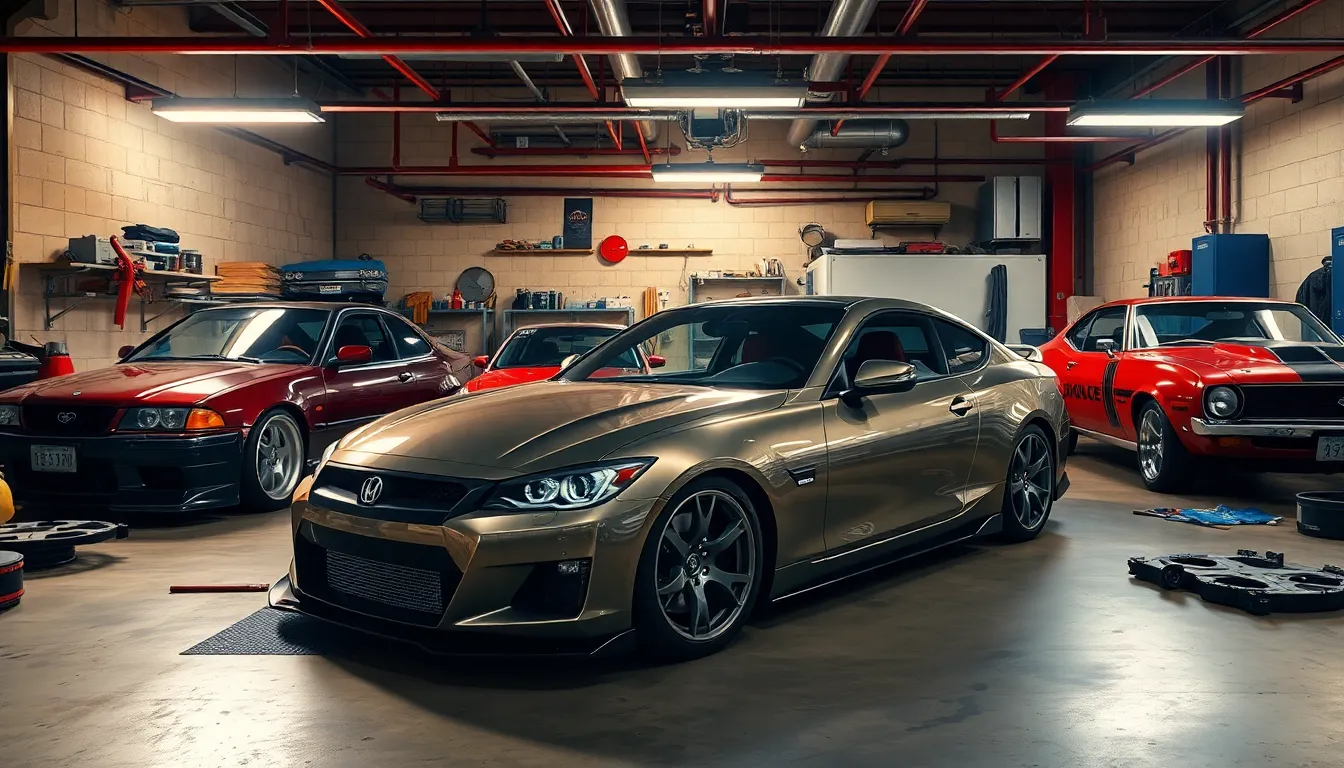
Choosing the right foundation vehicle can make or break your modification project. We’ve identified the most popular platforms that offer exceptional potential for both beginners and experienced builders.
Japanese Sports Cars
Honda Civic remains our top choice for modification projects due to its incredible aftermarket support and proven reliability. Over 500 different performance companies manufacture parts specifically for Civic platforms from 1992 to present, making upgrades both affordable and accessible. Engine swaps become straightforward with K-series motors fitting perfectly into older chassis, while turbocharger kits can push stock D-series engines beyond 300 horsepower.
Nissan 350Z and 370Z platforms deliver exceptional modification potential through their robust VQ engines and balanced chassis design. Forced induction systems can increase power output from 287 to over 500 horsepower, while suspension modifications transform these cars into track-ready machines. Aftermarket support includes everything from widebody kits to complete interior racing packages.
Mazda Miata generations offer lightweight platforms perfect for handling modifications and engine swaps. Turbocharger installations can double the stock 155 horsepower output, while suspension upgrades create razor-sharp cornering capabilities. Engine swap options include everything from Ford Coyote V8s to rotary 13B engines for builders seeking unique combinations.
Toyota Supra Mark IV remains the ultimate Japanese tuning platform with its legendary 2JZ-GTE engine capable of handling over 1000 horsepower on stock internals. Aftermarket companies produce everything from carbon fiber body panels to massive turbocharger systems specifically designed for this chassis. Single turbo conversions can produce 500+ horsepower with basic bolt-on modifications.
American Muscle Cars
Ford Mustang GT generations from 2005 onward provide excellent modification foundations with their modular V8 engines and strong aftermarket support. Supercharger systems can boost the 5.0L Coyote engine from 460 to over 700 horsepower, while suspension packages improve handling dramatically. Aftermarket companies offer complete transformation kits including widebody panels and racing interiors.
Chevrolet Camaro SS platforms deliver exceptional power potential through their LS and LT engine families known for modification friendliness. Forced induction systems can push these engines beyond 600 horsepower, while handling packages transform them into capable road course machines. Engine swap compatibility allows builders to install everything from LS1 to supercharged LT4 powerplants.
Dodge Challenger R/T and SRT variants offer unique retro styling combined with modern performance capabilities perfect for modification projects. HEMI engines respond well to forced induction with supercharger systems adding 200+ horsepower over stock output. Suspension modifications can significantly improve the somewhat soft factory handling characteristics.
Chevrolet Corvette C5 and C6 generations provide exceptional performance foundations with their lightweight construction and potent LS engines. Turbocharger systems can push these platforms beyond 800 horsepower while maintaining reasonable reliability, and suspension modifications create industry-class handling capabilities. Aftermarket support includes everything from carbon fiber aerodynamics to complete interior racing packages.
European Performance Vehicles
BMW E36 and E46 3 Series models offer exceptional modification potential through their balanced chassis design and strong aftermarket support. Engine swaps using more powerful BMW motors create important power increases, while suspension modifications transform handling characteristics dramatically. Turbocharger systems can double the output of naturally aspirated engines in these platforms.
Volkswagen Golf GTI generations provide excellent modification foundations with their turbocharged engines and sophisticated suspension systems. Stage 1 ECU tunes can increase power by 50+ horsepower, while advanced modifications can push these engines beyond 400 horsepower. Aftermarket companies offer complete transformation packages including aerodynamic enhancements and performance interiors.
Audi A4 and S4 platforms deliver exceptional modification potential through their advanced Quattro all-wheel-drive systems and responsive turbocharged engines. Performance modifications can increase power output significantly while maintaining the sophisticated driving experience these vehicles provide. Suspension upgrades create exceptional handling capabilities perfect for both street and track use.
Porsche 911 generations offer legendary performance foundations perfect for modification projects seeking the ultimate driving experience. Engine modifications can significantly increase power output while maintaining the unique characteristics these vehicles provide, and suspension packages create industry-class handling capabilities. Aftermarket support includes everything from lightweight racing components to complete aerodynamic packages.
Budget-Friendly Modifications for First-Time Builders
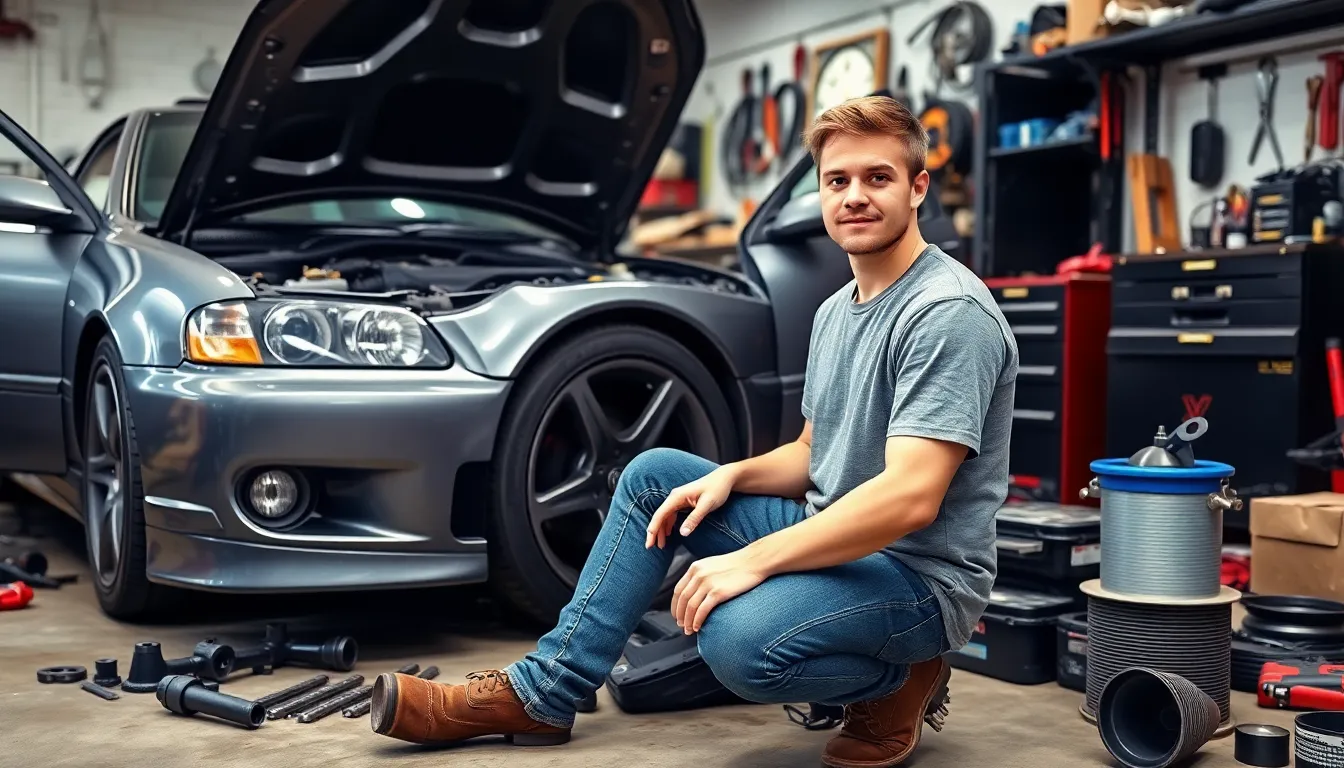
Starting your first modification project doesn’t require very costly or diving into complex engine work. We’ll guide you through affordable upgrades that deliver noticeable improvements while teaching fundamental modding skills.
Cold Air Intake Systems represent the perfect entry point for beginning builders. These modifications typically cost between $150-$300 and can be installed with basic hand tools in under two hours. Installing a cold air intake teaches you about airflow principles while adding 5-10 horsepower to most vehicles. Brands like K&N, Spectre, and AEM offer quality systems that include detailed instructions perfect for first-time installers.
Basic Exhaust Modifications provide both performance gains and that satisfying sound many builders crave. Axle-back exhaust systems start around $200-$400 and require minimal cutting or welding skills. Companies like Flowmaster, Borla, and Magnaflow design bolt-on systems that increase horsepower by 3-8 percent while dramatically improving exhaust note. Cat-back systems offer greater performance benefits for $400-$800 but require more installation time and basic exhaust knowledge.
Appearance Upgrades deliver maximum visual impact for minimal investment. Vinyl wraps cost $500-$1,500 for professional installation or $200-$400 for DIY materials and transform your vehicle’s entire appearance. Window tinting runs $150-$400 and provides privacy while reducing interior heat buildup. LED lighting conversions for headlights and taillights typically cost $100-$300 and modernize older vehicles instantly.
Suspension Drop Springs lower your vehicle’s stance for $200-$500 while improving handling characteristics. Brands like Eibach and H&R manufacture progressive-rate springs that maintain ride quality while reducing wheel gap. Installation requires spring compressors and basic suspension knowledge but teaches valuable chassis modification skills. Most drop springs lower vehicles 1.5-2.5 inches and pair well with performance shocks for enhanced results.
Wheel and Tire Packages transform both appearance and performance when chosen wisely. Used performance wheels from reputable manufacturers cost $400-$800 for a complete set and often outperform expensive new alternatives. Focusing on lightweight designs reduces unsprung weight and improves acceleration response. Performance tires in popular sizes like 225/45R17 or 245/40R18 provide better grip for $600-$1,000 per set.
Interior Modifications enhance daily driving experience without major expense. Racing-style shift knobs cost $50-$150 and improve gear change feel in manual transmissions. Pedal covers add sporty aesthetics for $30-$80 while seat covers protect original upholstery for $100-$300. Dashboard trim kits starting at $100 modernize aging interiors with carbon fiber or aluminum accents.
Performance Air Filters offer ongoing benefits for just $40-$80 and can be cleaned and reused indefinitely. These washable filters improve airflow compared to paper alternatives while reducing long-term maintenance costs. Brands like K&N and AEM design drop-in replacements that require no modifications to existing airbox systems.
Basic Tuning Modifications unlock hidden performance potential in modern vehicles. Handheld tuners for popular platforms cost $300-$500 and can add 15-25 horsepower through optimized fuel and timing maps. These devices teach valuable lessons about engine management while providing reversible modifications that won’t void warranties when used properly.
Safety Tips When Working on Modded Cars
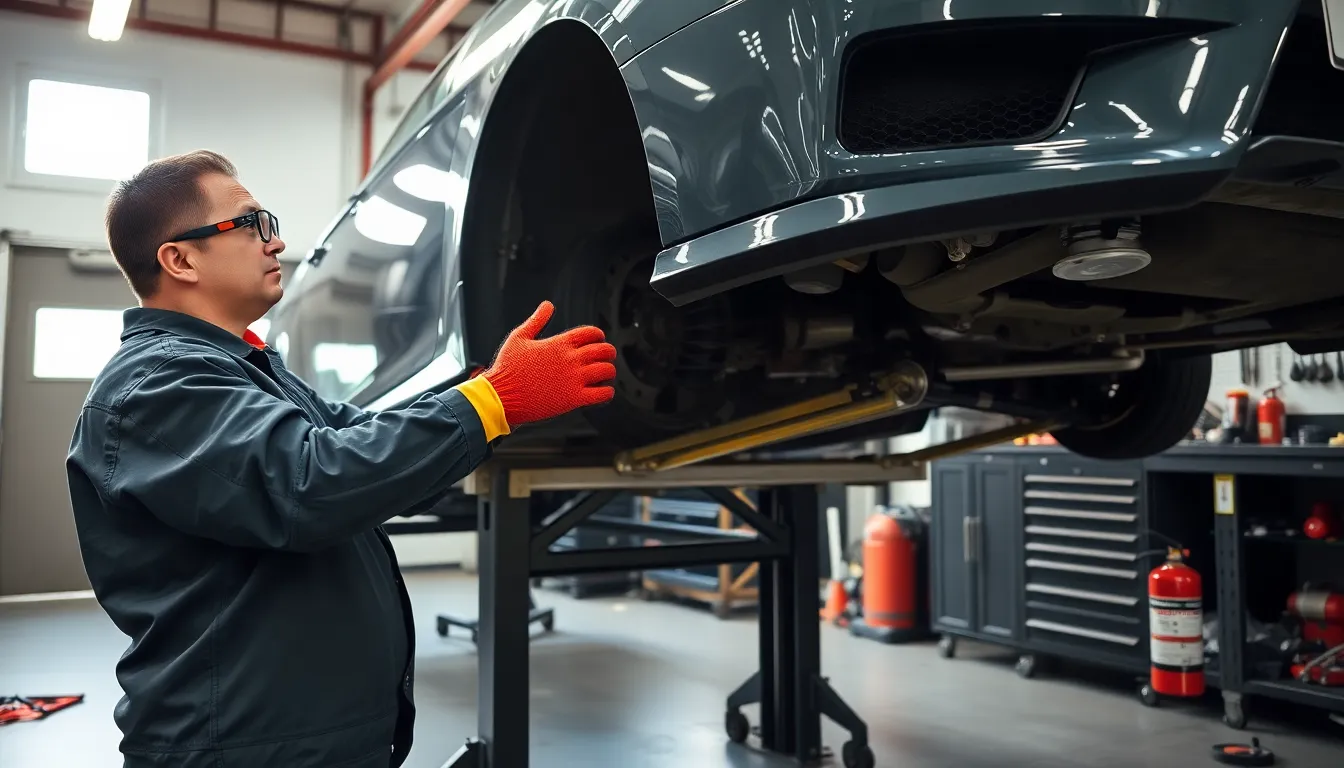
Working on modified vehicles requires enhanced safety protocols compared to standard automotive maintenance. We strongly recommend establishing proper safety procedures before touching any modified components that may operate under different parameters than stock systems.
Essential Personal Protective Equipment
Protective gear becomes critical when handling aftermarket parts and modified systems. We always wear safety glasses with side shields when working around turbocharger installations or high pressure fuel systems. Heat resistant gloves protect hands from exhaust components that run significantly hotter than stock systems. Steel toed boots prevent crushing injuries when handling heavy engine components or wheel assemblies during modification work.
Fire Prevention and Emergency Response
Modified fuel systems and electrical upgrades create increased fire risks during installation and maintenance. We keep a Class B fire extinguisher within arm’s reach when working on any fuel delivery modifications or turbocharger oil lines. Disconnecting the battery prevents electrical fires when installing aftermarket wiring harnesses or performance ignition systems. Having an emergency action plan ensures quick response if fuel vapors ignite during pump upgrades or injector installations.
Proper Lifting and Support Techniques
Modified vehicles often have altered weight distributions that affect safe lifting procedures. We verify jack points remain structurally sound after installing heavy body kits or reinforcement plates before attempting to lift the vehicle. Aftermarket suspension components may change ground clearance requiring different jack heights and support positions. Using jack stands rated for 150% of the vehicle’s modified weight provides adequate safety margins for cars with added roll cages or sound deadening materials.
Electrical System Safety Protocols
Performance electrical modifications create unique hazards not present in stock vehicles. We test all aftermarket wiring with a multimeter before connecting to prevent shorts that could damage expensive engine management systems. High output alternators and upgraded charging systems require proper grounding techniques to prevent dangerous voltage differentials. Capacitor banks in audio systems store lethal electrical charges that must be properly discharged before handling.
Chemical Handling and Ventilation
Modified vehicles often require specialized fluids and chemicals during maintenance procedures. We ensure adequate ventilation when working with methanol injection systems or race fuel additives that produce harmful vapors. Proper disposal containers for synthetic racing oils and brake fluids prevent environmental contamination and health hazards. Reading all material safety data sheets helps identify exact handling requirements for aftermarket fluids and solvents used in performance applications.
Finding the Right Community and Resources for Modded Car Enthusiasts
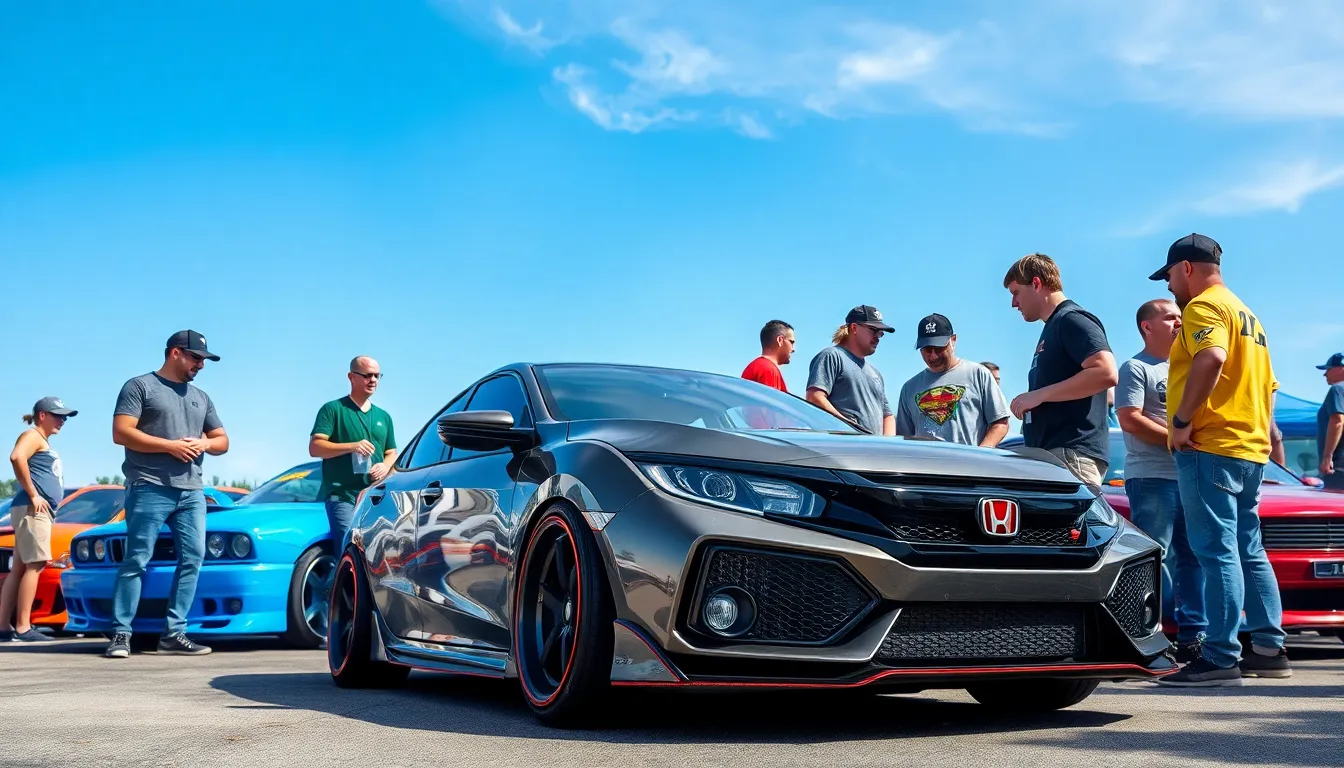
Building connections within the modified car community amplifies your project’s success while providing invaluable support throughout your modification journey. Online forums dedicated to your exact vehicle model offer the most concentrated knowledge base, with platforms like Honda-Tech for Civic owners or MY350Z.com for Nissan enthusiasts hosting decades of technical discussions and troubleshooting guides.
Joining Online Communities and Forums
Specialized forums provide direct access to experienced builders who’ve already overcome the challenges you’ll face during your modification process. Reddit communities like r/Honda, r/Miata, and r/projectcar connect thousands of enthusiasts sharing real-industry experiences, installation tips, and budget-friendly answers for common modification projects.
Facebook groups focused on exact car models deliver instant feedback when you encounter technical obstacles or need quick recommendations for parts suppliers. Local automotive groups on social media platforms help you discover nearby shops, dyno facilities, and experienced mechanics familiar with modified vehicles in your area.
Discord servers dedicated to car modification create real-time communication channels where you can get immediate answers to urgent questions during active build sessions. These platforms often feature voice channels where experienced builders provide step-by-step guidance for complex installations.
Attending Car Meets and Events
Regional car meets expose you to diverse modification styles while allowing hands-on inspection of different approaches to similar builds. Import Alliance, Wekfest, and SEMA connect you with industry professionals, aftermarket manufacturers, and fellow enthusiasts who can recommend reliable suppliers and installation techniques.
Track day events provide opportunities to test your modifications in controlled environments while learning from drivers who’ve optimized their setups for performance applications. Autocross competitions help you understand how suspension modifications translate into real-industry handling improvements.
Cars and Coffee gatherings offer casual environments to discuss modification experiences with local enthusiasts who can recommend trusted shops and parts suppliers in your immediate area. These weekly events typically feature diverse vehicle builds ranging from budget-friendly projects to high-end custom builds.
Utilizing Professional Resources
Performance shops specializing in your vehicle platform provide expertise that prevents costly mistakes during complex modifications like engine swaps or turbocharger installations. Shops with dyno facilities offer tuning services that maximize your modifications’ potential while ensuring reliability and emissions compliance.
Technical training programs at community colleges and trade schools teach fundamental skills like welding, electrical work, and engine building that expand your modification capabilities. ASE certification programs provide structured learning paths for automotive systems that directly apply to modification projects.
Manufacturer resources from companies like Hondata, AEM, and Cobb Access Port offer technical support, installation guides, and tuning maps exact to your modifications. These companies maintain extensive knowledge bases and customer support teams experienced with their products’ integration into various vehicle platforms.
Building Your Support Network
Mentorship relationships with experienced builders accelerate your learning curve while preventing expensive trial-and-error approaches to complex modifications. Local automotive instructors, shop owners, and seasoned enthusiasts often welcome opportunities to share their knowledge with motivated newcomers.
Parts supplier relationships develop over time as you identify companies that consistently deliver quality components and reliable customer service. Establishing accounts with distributors like Summit Racing, JEGS, and specialty importers often provides access to bulk pricing and technical support.
Professional connections with tuners, fabricators, and specialty mechanics become invaluable as your modification projects increase in complexity and scope. These relationships ensure you have reliable resources for services beyond your skill level while maintaining quality standards for your build.
Conclusion
The modded car scene continues to evolve as we witness incredible innovations in aftermarket parts and modification techniques. Whether you’re drawn to performance gains or aesthetic transformation your journey into vehicle modification offers endless possibilities for creative expression.
We’ve seen how the right foundation vehicle combined with smart upgrade choices can deliver impressive results without very costly. From basic intake and exhaust modifications to comprehensive suspension overhauls each upgrade teaches valuable skills while improving your driving experience.
Remember that successful modification projects rely heavily on community support proper safety protocols and understanding legal requirements in your area. The relationships you build within the modding community often prove just as valuable as the technical knowledge you gain.
Your modified car represents more than just upgraded parts—it’s a reflection of your passion creativity and dedication to automotive excellence. Start with simple modifications master the fundamentals and gradually work toward more complex projects as your confidence and skills develop.
Frequently Asked Questions
What are modified cars and why are they popular?
Modified cars are vehicles that have been customized beyond their stock configuration, involving performance upgrades, aesthetic changes, or both. They’re popular because they represent the ultimate expression of automotive personalization, allowing car enthusiasts to transform ordinary vehicles into unique masterpieces that reflect their individual style and performance preferences.
What are the most popular engine modifications for performance?
The three most popular engine modifications are turbocharger/supercharger installations (which can increase horsepower by 30-50%), cold air intake systems (adding 5-15 horsepower while improving combustion efficiency), and exhaust system upgrades including cat-back systems and headers that provide additional power gains and better sound.
What legal considerations should I know before modifying my car?
Before modifying your vehicle, understand federal emissions laws, state-specific safety inspections, and local regulations. Modifications affecting emissions systems require EPA exemptions, and some states have restrictions on vehicle height, window tinting, and other modifications. Always check local laws to ensure compliance and avoid penalties.
How do modifications affect car insurance?
Car modifications often require additional coverage or result in higher premiums. Insurance companies may impose restrictions or increase rates for performance modifications. It’s crucial to contact your insurance provider before starting any modification project to understand coverage limitations and consider declared value policies for heavily modified vehicles.
Which car models are best for modification projects?
Popular modification platforms include Honda Civic, Nissan 350Z/370Z, Mazda Miata, Toyota Supra, Ford Mustang GT, Chevrolet Camaro SS, BMW 3 Series, and Volkswagen Golf GTI. These models are favored due to extensive aftermarket support, strong community backing, and proven performance potential for both beginners and experienced builders.
What are some budget-friendly modifications for beginners?
Affordable starter modifications include cold air intake systems, basic exhaust modifications, appearance upgrades like vinyl wraps, suspension drop springs, wheel and tire packages, interior enhancements, and performance air filters. These upgrades provide noticeable improvements while teaching fundamental modification skills without major expenses.
What safety precautions should I take when working on modified cars?
Enhanced safety protocols are essential when working on modified vehicles. Use personal protective equipment including safety glasses, heat-resistant gloves, and steel-toed boots. Implement fire prevention measures, use proper lifting techniques, follow electrical system safety protocols, ensure proper ventilation, and handle specialized chemicals carefully to mitigate risks.
How can I find the right community and resources for car modification?
Connect with online forums specific to your vehicle model, join Reddit communities and Facebook groups for real-time feedback, attend car meets and events for hands-on learning, utilize professional resources like performance shops, and build relationships with mentors and parts suppliers to maximize your modification project’s success.

